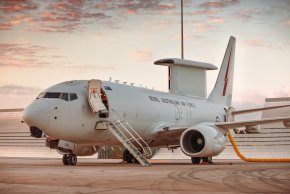In regards to the Super Hornet future decision, What needs to be considered is also the Growler. Being the same base aircraft there is plenty of efficiencies in having 35 (11 Growlers, 24 Shornets) for the maintenance and costs involved. Replacing the Shornets with something different to what ever Growler replacement could potentially have negative effects on one or the other or even both. Way I see it only 2 real options, Either keep with Shornet or get the extra 28 F-35 options we have, Anything else existing would be a distraction rather then helpful while the NGAD or any other of several programs currently planned for that time period more then likely wont be able to deliver a fieldable asset around decision time leaving us backl to Shornets being kept or 4th F-35 squadron.
I also wouldnt make the assumption that the 4th squadron would be made up of Loyal Wingman as the DWP has set aside upto $11 billion for that sort of capability outside of the 4th squadron replacement.
As for the KC-30 well all options appear to be allowed for with it stating for an 'expanded' fleet of crewed and/or uncrewed aircraft. At bare minimum we will likely replace our current aircraft on a one for one basis with similar aircraft types (maybe larger, maybe unmanned who knows) but with budget set aside it wouldnt surprise me if they are thinking long term to potentially have an unmanned refueling capability to buddy up with our future 'Teaming air vehicles' giving them even greater range.
2025 through to 2035 will be a very big period for the RAAF with the amount of programs going on, 4th squadron, C-130 replacement, E-7A replacement, KC-30A replacement, Growler replacement, Teaming air vehicles along with addition ISR and that is just the aircraft.

